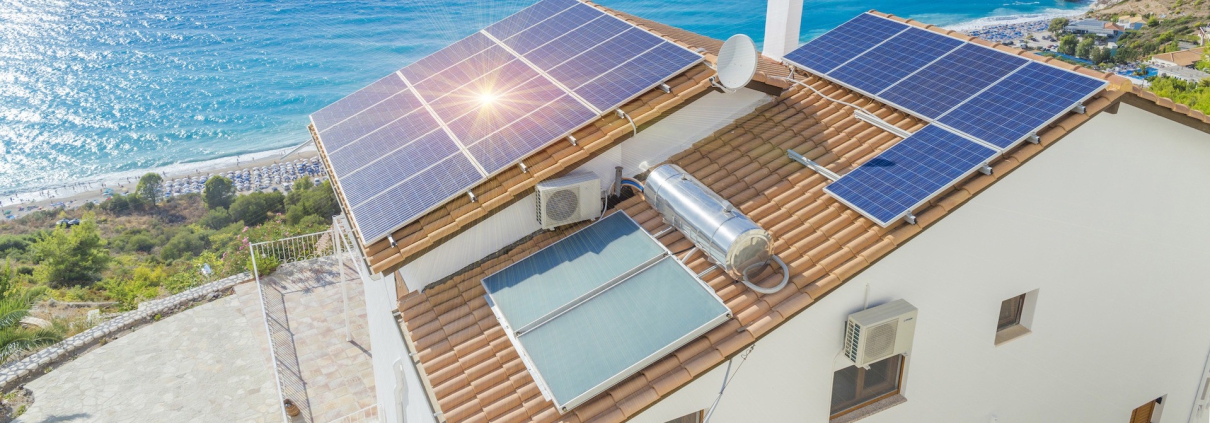Smart Home Energy Storage Systems: How AI and Modular Design Are Powering the Next Generation of Residential Energy
- Introduction — From Backup to Intelligence
Over the past few years, the home energy storage landscape in North America has evolved dramatically. Once primarily a backup solution, a modern home energy storage system now plays a central role in managing electricity consumption, integrating renewable energy, and optimizing costs. Frequent power outages, particularly in regions like California, Texas, and Florida, have accelerated the adoption of these systems, encouraging homeowners to seek smarter, more adaptable solutions.
Frequent blackouts have become a major factor driving residential storage adoption, as detailed in How power outages are fueling the growth of the home energy storage market in America. This context sets the stage for understanding why AI and modular design are increasingly central to the next generation of home energy solutions.
- The Shift Toward Smarter Home Energy Storage
Traditional home energy storage solutions were relatively static, with batteries charging and discharging on a fixed schedule, offering little responsiveness to household energy demand, renewable energy generation, or dynamic utility pricing. Today, smart home energy storage systems utilize AI energy management to optimize energy flow in real time.
Advanced AI controllers analyze historical household energy usage, local weather forecasts, and utility rate schedules to create dynamic charging and discharging strategies. In homes with rooftop solar, AI ensures that excess solar generation is stored efficiently, reducing reliance on the grid. In markets with time-of-use (TOU) rates, AI-driven control can cut electricity bills by 15–25%, turning a simple battery unit into a proactive energy management system.
This transition reflects a broader trend: home energy storage is no longer just a safety net but a strategic tool for cost optimization and energy independence.
III. The Architecture Behind an Intelligent Home Energy Storage System
A modern home energy storage system is composed of several key components, each contributing to overall performance and flexibility:
- Lithium battery modules – Provide high energy density and long lifespan, scalable from 5 kWh to 50 kWh depending on household needs.
- AI-based energy management controller – Learns household usage patterns and optimizes charging/discharging schedules for cost and reliability.
- Hybrid inverter – Enables seamless bidirectional AC/DC energy flow between home circuits, battery modules, and the grid.
- Monitoring and communication layer – Cloud-connected dashboards provide real-time insights and remote control.
Modular design offers significant advantages: capacity can be expanded as energy needs grow, different parts of the house can be independently optimized, and upgrades or maintenance are simpler. Homeowners exploring practical, scalable solutions can consider residential lithium battery systems, which integrate modular hardware with AI-driven control for optimized energy management.
- The Role of AI and Predictive Algorithms
AI is the core intelligence of modern home energy storage. Predictive algorithms consider historical consumption data, real-time electricity rates, and weather forecasts to schedule charging and discharging efficiently. Over time, these algorithms learn patterns in household energy use, such as EV charging times, HVAC operation, and high-load appliance activity.
In solar-equipped homes, AI ensures maximum self-consumption by storing surplus generation for later use. This reduces unnecessary grid exports and helps homeowners save on electricity costs. In regions with variable utility pricing, predictive AI can dynamically shift energy consumption to minimize bills while maintaining comfort and reliability.
Predictive AI is therefore not just a convenience—it transforms a battery from a passive device into an active participant in household energy management.
- V2H and V2G: Bidirectional Energy Flows Redefining the Home Grid
Beyond predictive AI, Vehicle-to-Home (V2H) and Vehicle-to-Grid (V2G) technologies are expanding the capabilities of residential energy storage. With bidirectional energy flow, an EV can function as an extension of the home battery, providing power during outages or peak-demand periods.
For example, a V2H-enabled EV can supply electricity to critical home circuits during a blackout, or allow for strategic charging during low-rate periods with energy export to the grid during peak rates. Advanced V2H battery systems coordinate the home battery and EV seamlessly, ensuring energy efficiency and reliability without requiring user intervention.
Certain residential energy storage systems now support V2H integration, allowing homeowners to fully leverage their EVs as part of a unified, intelligent home energy ecosystem. Safety standards, including ISO 15118 and robust battery management systems (BMS), provide secure and reliable bidirectional operation.
- Real-World Scenarios and System Optimization
Intelligent home battery optimization has tangible benefits in real-world settings:
- Texas example: A home with a 10 kWh storage system maintained power for 72 hours during a severe outage, keeping essential appliances operational.
- California example: A household using AI-managed storage and solar panels reduced annual electricity bills by over 22% through optimized peak shaving and load management.
Energy visualization dashboards give homeowners actionable insights, allowing for proactive monitoring and adjustment of energy usage. For readers seeking technical detail, Home BESS Systems: A Complete Guide to Residential Energy Storage provides comprehensive coverage of design principles, modularity, and system optimization.
VII. Challenges and the Future of Smart Energy Storage
Despite technological advances, challenges remain. Data privacy, AI transparency, and compatibility with different hardware brands are key considerations. Standardization and interoperability are essential for long-term reliability and user confidence.
Looking forward, AI-driven home energy systems will continue evolving. Solid-state batteries promise higher safety and longer lifespans, while predictive maintenance algorithms reduce downtime. Integration into neighborhood microgrids and virtual power plants (VPPs) is expected to enhance grid resilience and allow homes to participate in broader energy markets.
Advanced residential energy storage systems are already incorporating these features, providing scalable modularity, AI-driven control, and V2H functionality. By moving from simple backup solutions to intelligent, integrated energy hubs, these systems are reshaping how North American households interact with electricity and renewable energy.


